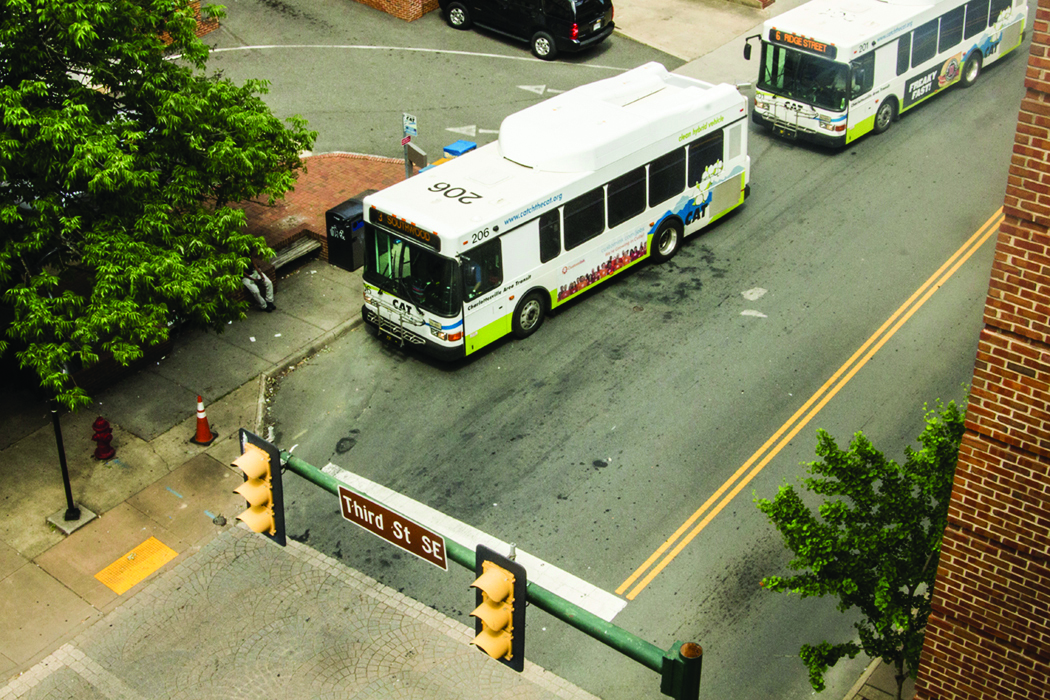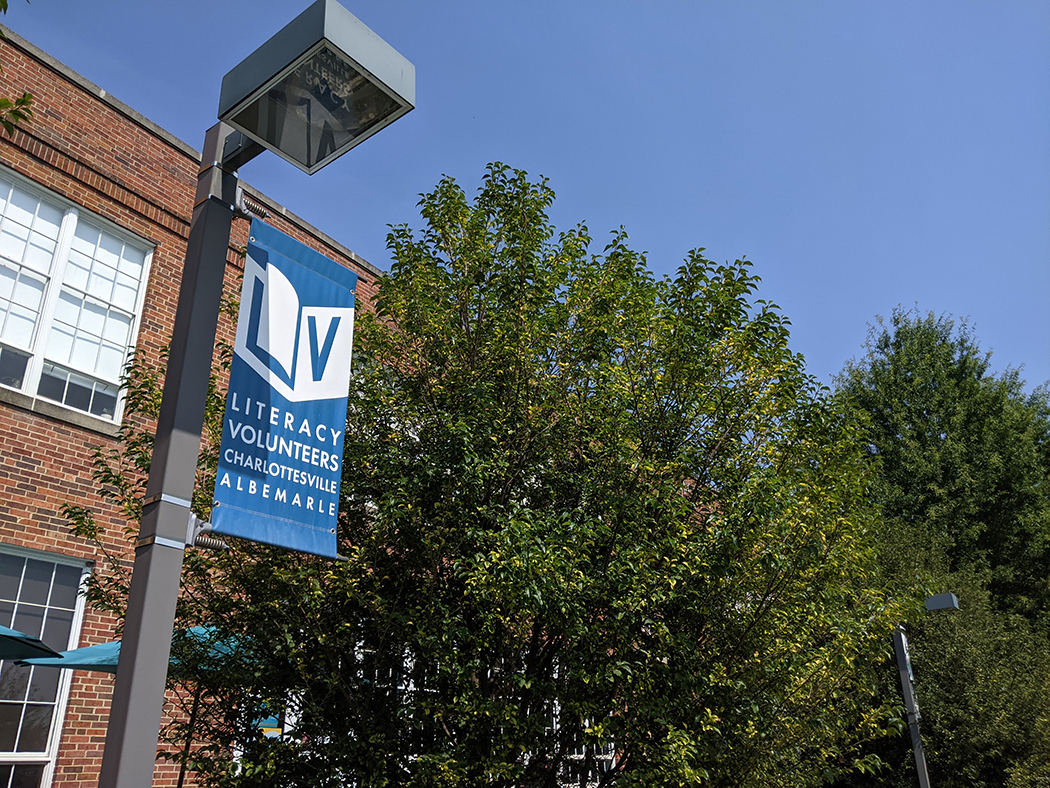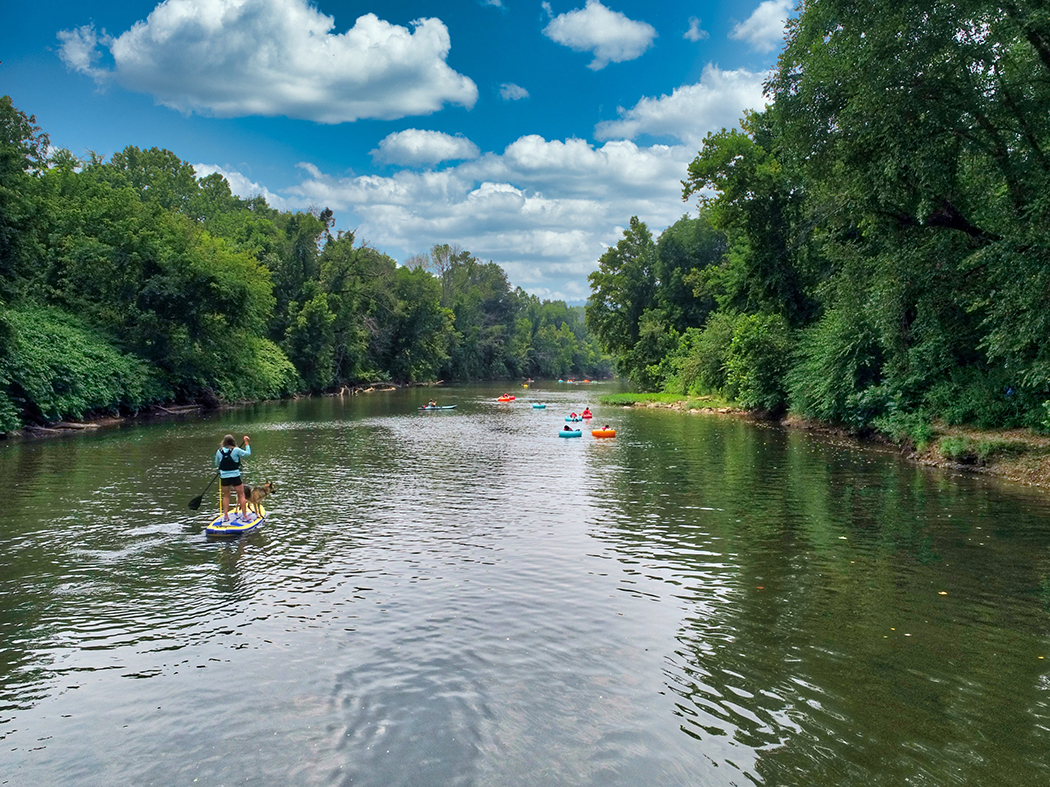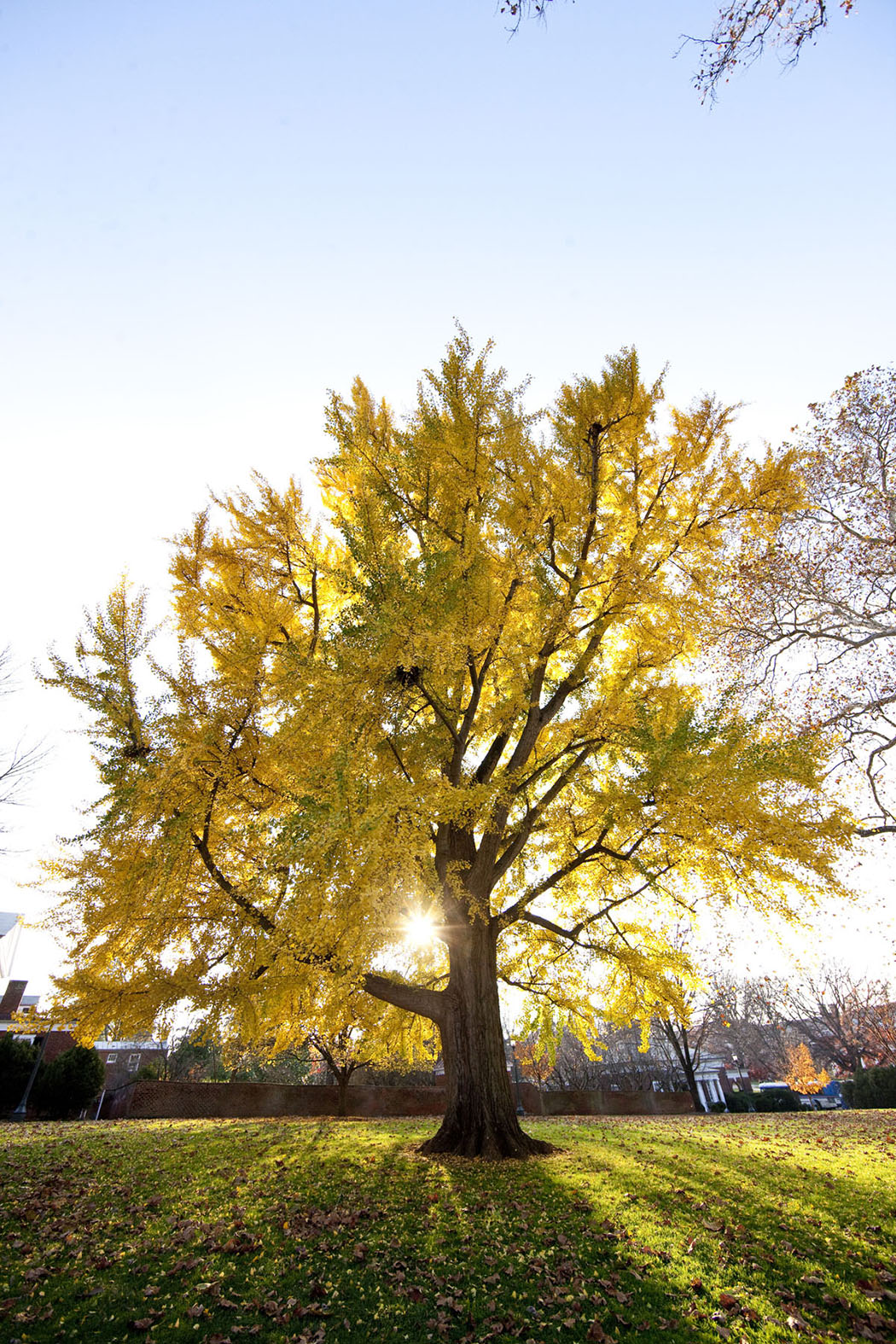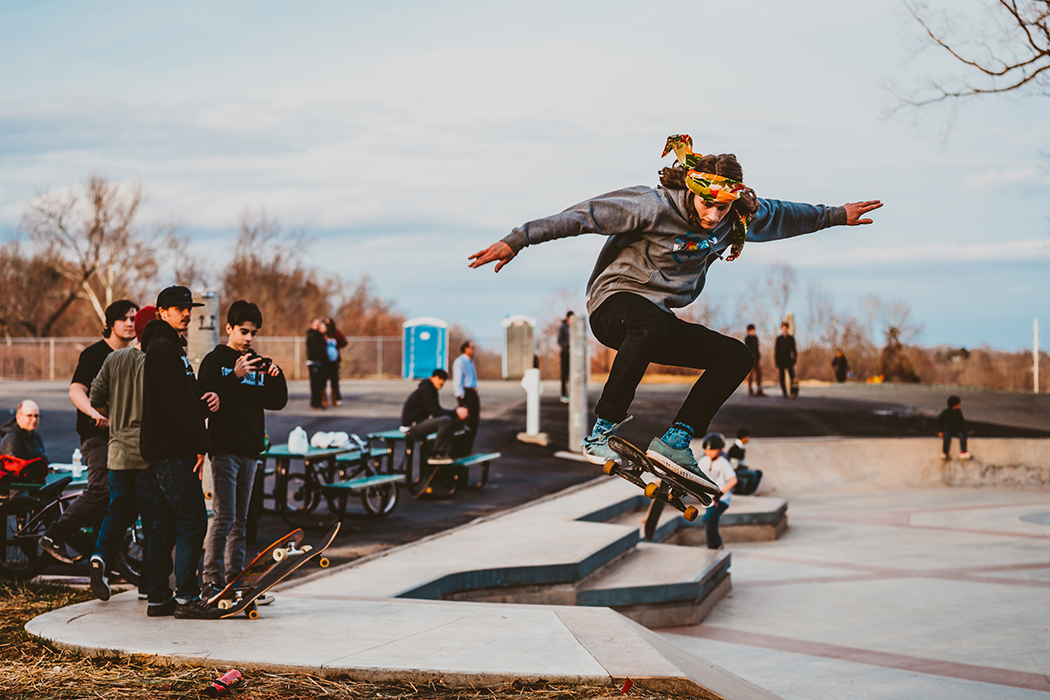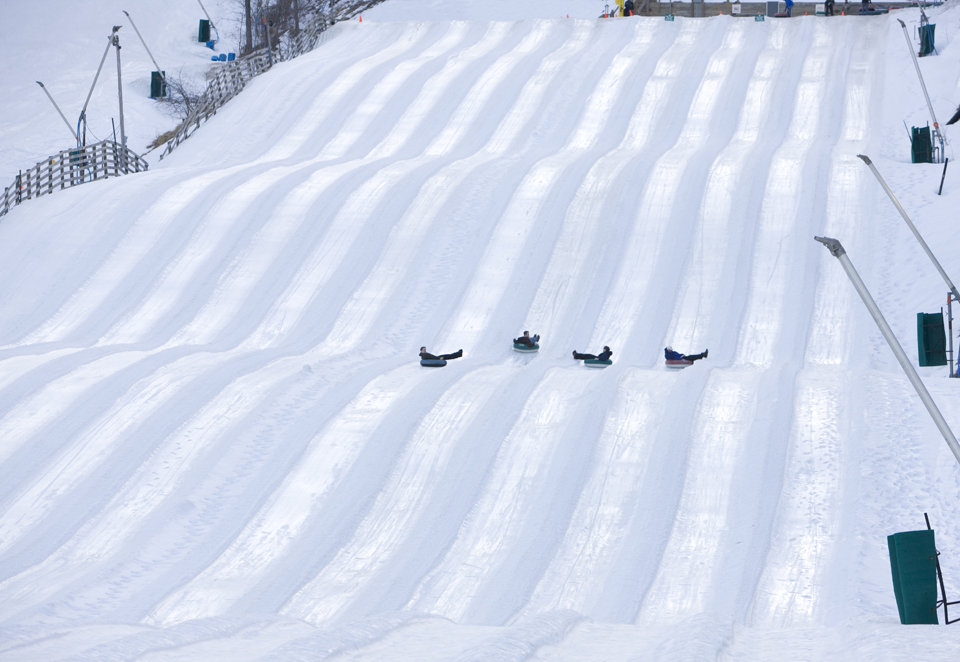How well does the Charlottesville Skate Park rate nationally? It’s not huge in raw size, so it doesn’t make a splash on the major top-10 lists. But the city was able to attract high-level talent to manage the place—pro skater Matt Moffett, who’s supervised parks all over the country—and the park has begun to bring in riders from up and down the East Coast, attracting action sports enthusiasts to its combination of obstacles, features, and aesthetics.
“It’s been very much a success, and we have people come here regularly from all over,” Moffett says. “I’m in contact with the Tony Hawk Foundation, and they drool over this skate park.”
Aesthetically, the draws are the park’s intermittent maple trees and open spaces, not to mention the lack of a surrounding metal fence that so many parks feature.
But what of the main event, those obstacles and features? The upper portion of the Charlottesville Skate Park boasts an 18,000-square-foot street plaza with banks, ledges, rails, ramps, and funboxes (among other extreme sports lingo most folks will have to look up to understand). The lower portion offers another 15,000 square feet, devoted to a series of three bowls and pools. The park also has a flat asphalt multi-use area.
The street plaza is further divided into two tiers, one geared toward beginners, the other an Olympic-size course. Moffett says he hopes the different areas make the park accessible to a range of skating abilities, and attracting newbies seems to be one of the skate park’s best tricks. According to avid street skater and Cinema Skateshop owner Louis Handler, the facility’s visibility from the road is clutch.
“People love it, and the level of skateboarding in Charlottesville is going to shoot through the roof because of the park,” says Handler, who skates there several times per week. “Without a place like that, it is a lot more effort to get better.”
Handler says folks will have to overcome their fears; street obstacles and bowls can be scary for beginners. And they’re always going to come across intimidating skate park experts who’ve been doing it longer than they have.
But that’s something Moffett and Charlottesville Parks & Recreation know well and are doing their best to curb. The park helps organize lessons and camps to keep people skating. And in practice, Moffett says skaters fall into traffic patterns like those on a freeway and are respectful of others and their space.
“You don’t throw yourself in front of a moving bus, and this is similar,” Moffett says. “This is one of the unique places you will see tattooed men getting along and coexisting with little girls with unicorns on their helmets.”
The Charlottesville Skate Park was conceived as far back as 2012 but only officially opened in March 2019. And it’s still a work in progress. The lights that designers hoped to install before launch fell victim to a budget overrun, so the park is currently raising funds to equip for night riding.
“With the lights, in summertime you can skate another four or five hours,” Handler says. “Then you would really be getting a lot of bang for the buck. I only want to see it get better.”


